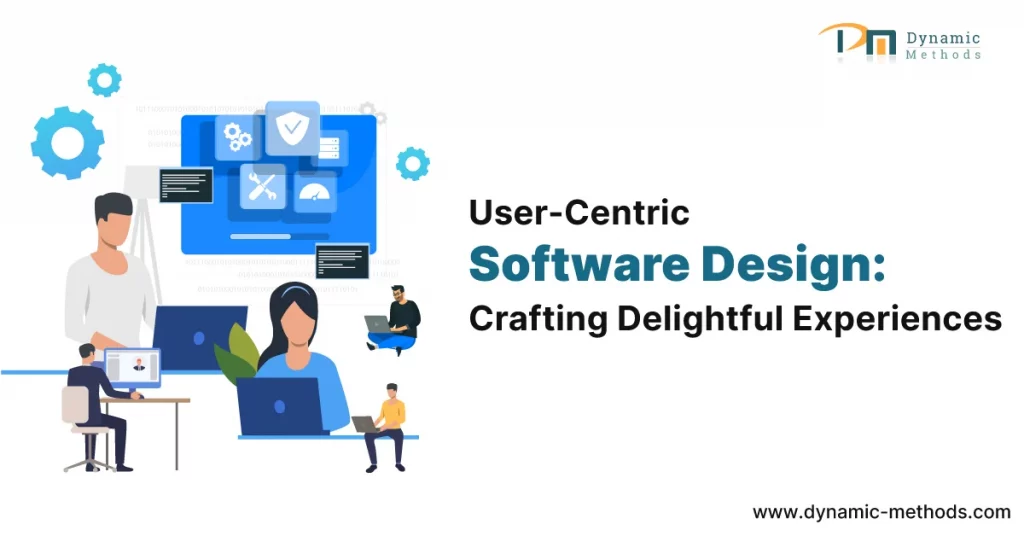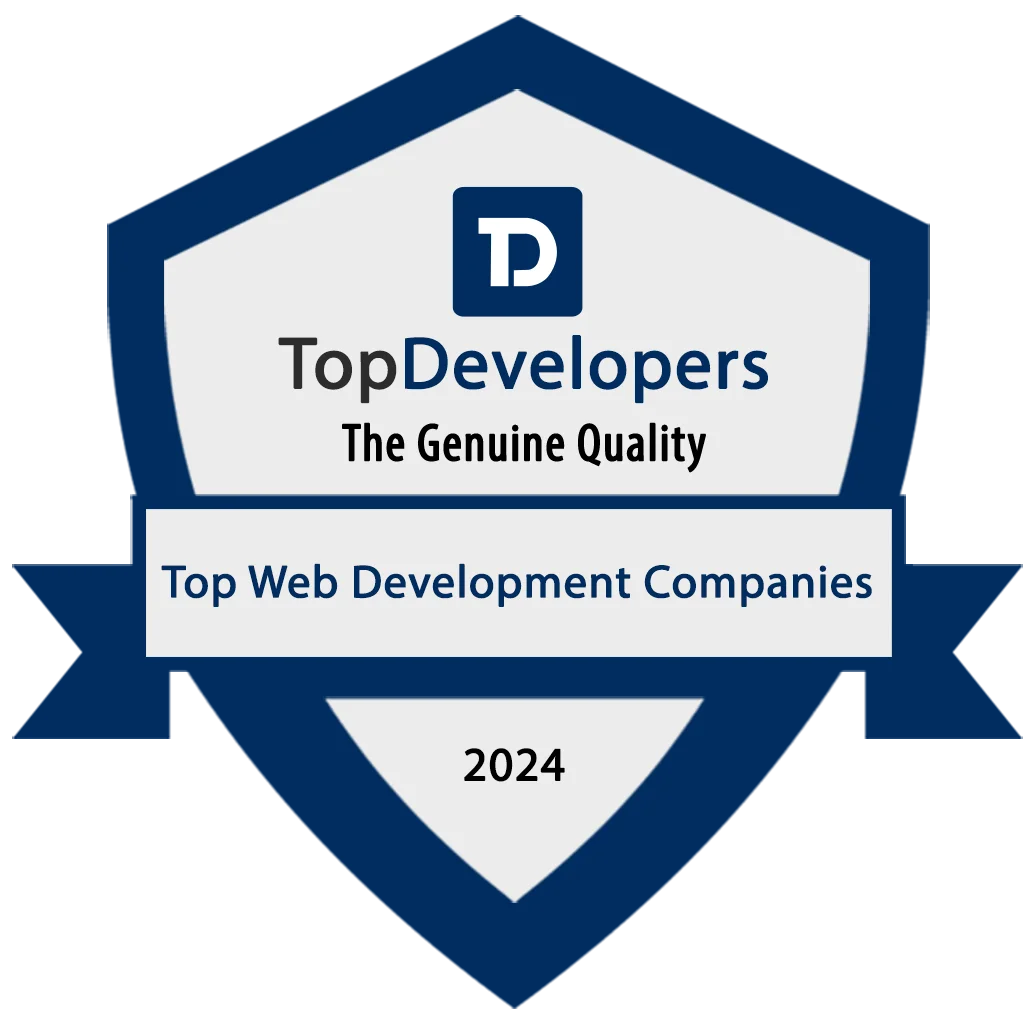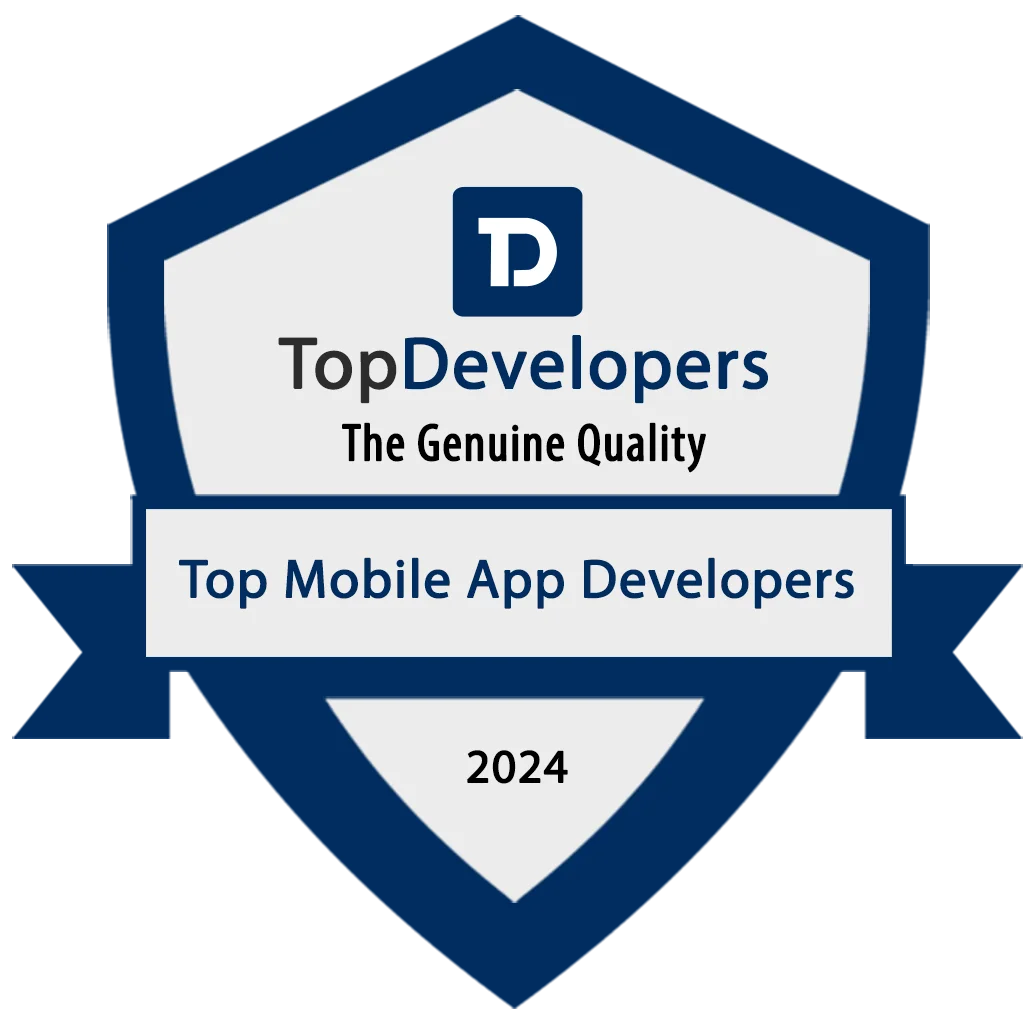
In the fast-paced realm of software product development, one key factor stands out as a beacon of success—User-Centric Design. This approach isn’t just a trend; it’s a fundamental philosophy that can make or break your software product. In this comprehensive guide, we’ll delve deep into User-Centric Design, understand its importance, and learn how it leads to crafting exceptional user experiences.
User-Centric Design in Software Product Development goes beyond being a mere buzzword; it’s a mindset that places the user at the core of the development process. By comprehending user needs, preferences, and pain points, we can create software that not only functions seamlessly but also delights its users.
User-Centric Design in Software Product Development goes beyond being a mere buzzword; it’s a mindset that places the user at the core of the development process. By comprehending user needs, preferences, and pain points, we can create software that not only functions seamlessly but also delights its users.
The Fundamentals
What Exactly Is User-Centric Design?
User-Centric Design, often referred to as UCD, is an iterative design process that revolves around user needs and feedback. It entails continuous testing, evaluation, and refinement to ensure that the final product aligns perfectly with user expectations.
Why Is User-Centric Design Crucial?
User-Centric Design is pivotal because it results in higher user satisfaction, reduced development costs, and increased user retention. By putting users first, you’re more likely to create a product that deeply resonates with your target audience.
The Profound Benefits
1. Elevated User Satisfaction: When users feel that your software comprehends and addresses their needs, they are more likely to be satisfied and loyal
2. Trimmed Development Costs: By identifying and addressing user issues early in the development process, you can avoid costly rework in the later stages.
3. Heightened User Retention : Delighted users are not only more likely to continue using your software but also to recommend it to others, amplifying your user base.
Implementing User-Centric Design
Steps to Achieving Success
1. User Research: Commence by gaining a profound understanding of your target audience. Conduct surveys, interviews, and usability tests to gather valuable insights.
2. Create User Personas: Develop user personas that represent different segments of your audience. This aids in designing for specific user needs and expectations.
3. Prototyping: Build prototypes and actively seek user feedback to refine your design. This iterative process ensures that your software aligns seamlessly with user expectations.
4. Usability Testing: Continuously test your software with real users to identify and rectify any usability issues. This process ensures that your software is not only functional but also user-friendly.
User-Centric Design in Action
Real-Life Illustrations
1. Apple’s iPhone : Apple’s relentless focus on user experience, from the intuitive interface to the sleek design, serves as a prime example of User-Centric Design in action.
2. Google Search: Google’s simplicity and swiftness in providing search results cater to users’ need for quick and relevant information, embodying User-Centric Design principles.
Conclusion
User-Centric Design in Software Product Development: Crafting Exceptional User Experiences isn’t just a technique; it’s a mindset shift. By prioritizing users and their needs, you can create software that not only functions flawlessly but also leaves users delighted. Remember, it’s not just about writing code; it’s about crafting experiences.
Embark on your journey toward creating exceptional user experiences by embracing User-Centric Design. Your users will thank you, and your software will thrive.
Frequently Asked Questions
1. How does User-Centric Design differ from traditional design approaches?
User-Centric Design stands apart by continually prioritizing user needs and feedback throughout the development process, ensuring a more user-friendly end product.
2. Is User-Centric Design solely applicable to software development?
No, User-Centric Design principles can be applied to various fields, including product design, web development, and even customer service, enhancing user experiences across the board.
3. What if user feedback conflicts with the project's vision?
Balancing user feedback with the project’s vision is vital. Strive for a compromise that preserves the core vision while addressing user concerns to achieve the best possible outcome.
4. How can small businesses implement User-Centric Design with limited resources?
Small businesses can initiate the process with basic user research and gradually integrate User-Centric Design principles into their development process as they grow.
5. Are there any tools or software that can assist in User-Centric Design?
Yes, a plethora of tools like user testing platforms, prototyping software, and analytics tools are available to aid in implementing User-Centric Design effectively.
6. What lies in the future of User-Centric Design?
User-Centric Design is here to stay and will evolve alongside technology. As technology advances, so will the methods and tools used in UCD, continually improving user experiences.




















Thank you, I have just been searching for information approximately this topic for a while and yours is the best I have found out so far. However, what in regards to the bottom line? Are you certain concerning the supply?
You’re very welcome! I’m delighted to hear that you found the information helpful. Regarding the bottom line and supply, I assure you that the information provided is accurate and up-to-date to the best of my knowledge. If you have any specific concerns or questions, feel free to ask, and I’ll do my best to provide further clarity.
Fantastic site Lots of helpful information here I am sending it to some friends ans additionally sharing in delicious And of course thanks for your effort
Thank you for your kind words and for sharing the site with your friends! I’m glad you find the information helpful. If you have any questions or need further insights, feel free to reach out. Your support and engagement are greatly appreciated!
I have been browsing online more than three hours today yet I never found any interesting article like yours It is pretty worth enough for me In my view if all website owners and bloggers made good content as you did the internet will be a lot more useful than ever before
Thank you for your kind words and high praise! It’s heartening to hear that you value the content so highly. The goal is always to provide insightful and engaging material that adds value to readers’ online experiences. Your feedback is a great motivation to continue striving for quality content. If there are specific topics you’re interested in, feel free to share!
certainly like your website but you need to take a look at the spelling on quite a few of your posts Many of them are rife with spelling problems and I find it very troublesome to inform the reality nevertheless I will definitely come back again
Thank you for your feedback. I’ll review the posts for spelling errors to improve the quality.
Thanks for sharing. I read many of your blog posts, cool, your blog is very good.
Thank you for your kind words! I’m glad you find the blog interesting.
Thanks for sharing. I read many of your blog posts, cool, your blog is very good.
Thank you for your kind words! I’m glad you enjoy the blog. If you have any specific topics or questions you’d like me to cover, please let me know.
Thank you for the auspicious writeup It in fact was a amusement account it Look advanced to far added agreeable from you However how can we communicate
Thank you for your kind words! I’m glad you enjoyed the writeup. To communicate further, you can reach out to me through the contact form on my website or send me an email. Looking forward to hearing from you!
Its like you read my mind You appear to know so much about this like you wrote the book in it or something I think that you can do with a few pics to drive the message home a little bit but instead of that this is excellent blog A fantastic read Ill certainly be back
Thank you for your kind words! I’m glad you enjoyed the blog. Adding some pictures is a great suggestion to enhance the content. I’ll definitely consider that for future posts. I look forward to having you back!
Wow wonderful blog layout How long have you been blogging for you make blogging look easy The overall look of your site is great as well as the content
Thank you so much! I’ve been blogging for quite some time now. I’m glad you like the layout and content of the site. Your feedback is very encouraging!
What an insightful article! Your ability to break down complex topics into easily understandable points is truly commendable. I appreciate the thorough research and the engaging writing style that keeps readers hooked from start to finish. Thank you for sharing your knowledge and providing such valuable content. I look forward to reading more of your work in the future!
Thank you for your thoughtful feedback! I’m thrilled you found the article insightful and engaging. I appreciate you sharing the additional resource—it sounds like a great complement to the topics discussed. I look forward to bringing you more valuable content in the future. Thanks for your support!
What an insightful article! Your ability to break down complex topics into easily understandable points is truly commendable. I appreciate the thorough research and the engaging writing style that keeps readers hooked from start to finish. Thank you for sharing your knowledge and providing such valuable content. I look forward to reading more of your work in the future!
Thank you for your thoughtful feedback! I’m thrilled you found the article insightful and engaging. I appreciate you sharing the additional resource—it sounds like a great complement to the topics discussed. I look forward to bringing you more valuable content in the future. Thanks for your support!
This article offers a fascinating perspective on the subject. The depth of research and clarity in presentation make it a valuable read for anyone interested in this topic. It’s refreshing to see such well-articulated insights that not only inform but also provoke thoughtful discussion. I particularly appreciated the way the author connected various aspects to provide a comprehensive understanding. It’s clear that a lot of effort went into compiling this piece, and it certainly pays off. Looking forward to reading more from this author and hearing other readers’ thoughts. Keep up the excellent work!
Thank you so much for your thoughtful and detailed feedback! I’m delighted to hear that you found the article both informative and thought-provoking. Your appreciation of the research and presentation means a lot. I look forward to sharing more content and engaging in further discussions. Thanks for your support!
This article offers a fascinating perspective on the subject. The depth of research and clarity in presentation make it a valuable read for anyone interested in this topic. It’s refreshing to see such well-articulated insights that not only inform but also provoke thoughtful discussion. I particularly appreciated the way the author connected various aspects to provide a comprehensive understanding. It’s clear that a lot of effort went into compiling this piece, and it certainly pays off. Looking forward to reading more from this author and hearing other readers’ thoughts. Keep up the excellent work!
Thank you for the wonderful feedback! I’m thrilled you found the article insightful and well-researched. I appreciate your kind words and am glad the connections made were valuable. I look forward to sharing more content and engaging in further discussions. Thanks for your support!
Fantastic article! I appreciate how clearly you explained the topic. Your insights are both informative and thought-provoking. I’m curious about your thoughts on the future implications of this. How do you see this evolving over time? Looking forward to more discussions and perspectives from others. Thanks for sharing!
Thank you for your kind words! I’m glad you found the article clear and thought-provoking. As for future implications, I see this evolving with advances in technology and changing trends, which will likely drive new developments and challenges. I’m excited to see how it unfolds and to continue the discussion with others. Thanks for your engagement!
Fantastic article! I appreciate how clearly you explained the topic. Your insights are both informative and thought-provoking. I’m curious about your thoughts on the future implications of this. How do you see this evolving over time? Looking forward to more discussions and perspectives from others. Thanks for sharing!
Thank you for your enthusiastic feedback! I’m glad you found the article clear and thought-provoking. Regarding the future implications, I believe this topic will evolve significantly as new developments unfold. I’m excited to explore these changes and their potential impacts. Looking forward to further discussions and hearing others’ perspectives. Thanks for engaging with the content!
Great article! I found your perspective on this topic both enlightening and thought-provoking. The way you break down complex ideas into understandable insights is truly commendable. It’s interesting to see how these developments could shape our future. I’m particularly intrigued by your point about potential challenges and would love to dive deeper into that.
Looking forward to hearing others’ thoughts and continuing this discussion. Thanks for sharing such valuable information!
Thank you for your kind words! I’m thrilled you found the article enlightening and the breakdown of ideas helpful. I appreciate you sharing the additional resource—it sounds like a valuable complement. I look forward to diving deeper into the challenges and continuing the discussion with everyone. Thanks for engaging with the content!
Great article! I found your perspective on this topic both enlightening and thought-provoking. The way you break down complex ideas into understandable insights is truly commendable. It’s interesting to see how these developments could shape our future. I’m particularly intrigued by your point about potential challenges and would love to dive deeper into that.
For those who are interested in exploring this topic further, I recommend checking out this resource for more detailed information: comprehensive guide. It offers additional insights that complement what’s discussed here.
Looking forward to hearing others’ thoughts and continuing this discussion. Thanks for sharing such valuable information!
Thank you for your thoughtful feedback! I’m glad you found the article enlightening and the breakdown of ideas useful. I appreciate you sharing the additional resource—it sounds like a great complement to the discussion. I look forward to continuing the conversation and exploring the challenges and developments further!
Great article! I appreciate the clear and insightful perspective you’ve shared. It’s fascinating to see how this topic is developing. For those interested in diving deeper, I found an excellent resource that expands on these ideas: check it out here. Looking forward to hearing others’ thoughts and continuing the discussion!
Thank you for your kind words! I’m glad you found the article insightful. I appreciate you sharing additional resources to further explore the topic. I look forward to continuing the discussion and hearing more perspectives!
Great article! I appreciate the clear and insightful perspective you’ve shared. It’s fascinating to see how this topic is developing. For those interested in diving deeper, I found an excellent resource that expands on these ideas: check it out here. Looking forward to hearing others thoughts and continuing the discussion!
Thank you for your positive feedback! I’m glad you found the article insightful. I appreciate you sharing additional resources—it’s always great to expand on these ideas. I look forward to continuing the discussion and hearing more thoughts from others!
User-centric design in software development places users at the core of the process, ensuring the creation of products that meet their needs and expectations. This approach not only enhances user satisfaction but also reduces development costs and increases user retention. By continuously gathering user feedback and iterating on the design, companies can build software that delights users and drives engagement.
You’ve summarized the essence of user-centric design beautifully! By focusing on users’ needs and iterating based on feedback, companies can indeed create more engaging and satisfying products. This approach not only enhances user experience but also optimizes development resources. Thanks for sharing this insight!
Excellent content! The way you explained the topic is impressive.
Thank you so much for your kind words! I’m glad you found the explanation impressive. I checked the given link is not working. Your feedback is greatly appreciated!
Thanks for sharing. I read many of your blog posts, cool, your blog is very good.
I’m glad the article was helpful! Yes, we have more related content available. Feel free to explore other posts on our blog, and let me know if you have any specific questions!
Can you be more specific about the content of your article? After reading it, I still have some doubts. Hope you can help me.
Thank you for your feedback! Feel free to share your doubts, and I’ll clarify them for you.
Your article helped me a lot, is there any more related content? Thanks!
Thank you for your sharing. I am worried that I lack creative ideas. It is your article that makes me full of hope. Thank you. But, I have a question, can you help me?
Thank you! I’m glad the article gave you hope. Please feel free to ask your question—I’m here to help!